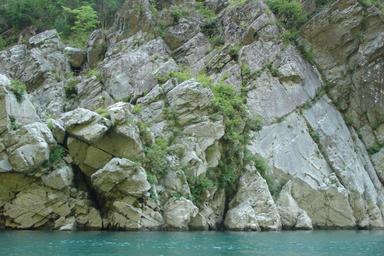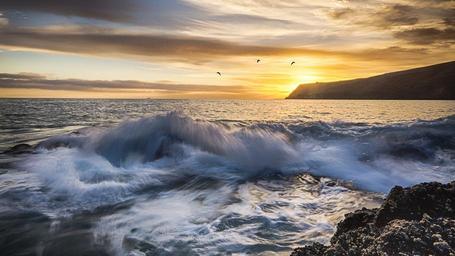Introduction
The world of fine art photography offers a unique lens through which we can explore the intricate relationship between beauty and decay. The concept of “Decayed Elegance in Fine Art Photography” emerges from the poignant juxtaposition of aging structures, nature's reclamation, and the artistry behind capturing these themes. This article delves deep into the various facets of this genre, exploring aesthetic approaches, technical aspects, and personal narratives woven through the lens.
By harnessing elements such as self-portrait photography, black and white photography, and narrative photography, artists can convey profound messages about life, decay, and the passage of time. This exploration not only enhances our appreciation for artistic expression but also https://writeablog.net/maryldkmtq/nature-vs-structure-an-artistic-dialogue-in-photography invites us to reflect on our own existence amidst the backdrop of ruin and bloom.
Decayed Elegance in Fine Art Photography
At its core, decayed elegance refers to an inherent beauty found within remnants of the past—structures that have seen better days yet still hold a certain charm. This aesthetic is often captured through techniques like tarnished color photography or muted palettes that echo with nostalgia. Photographers who specialize in this genre often find themselves drawn to scenes where nature intertwines with man-made constructs.
Exploring Decay
The act of exploring decay is not merely about documenting deterioration; it's about unveiling stories. The peeling paint on an old wall may whisper tales of joy and despair experienced within those four walls. Moss-covered ruins serve as a testament to resilience—how life persists despite time's relentless march forward.
The Role of Nature
Nature plays a crucial role in this narrative. It reclaims spaces once dominated by human ambition, creating stunning visuals that juxtapose growth against decline. The term "nature versus structure" encapsulates this ongoing battle, inviting photographers to capture moments where overgrown vegetation intertwines with crumbling bricks.
Understanding Fine Art Photography
Fine art photography transcends typical commercial work by emphasizing artistic vision and personal expression rather than just documentation or representation. Photographers engage with their subjects on a deeper level—transforming ordinary scenes into extraordinary works through thoughtful composition and technique.
Aesthetic Choices
In fine art photography, aesthetic choices profoundly impact the final image's emotional weight. Artists often utilize techniques such as:
- Black and White Photography: Stripping away color reveals underlying textures and contrasts. Tarnished Color Photography: Aged tones evoke nostalgia while highlighting decay's beauty. Symbolic Photography: Objects can represent broader themes like loss or rebirth.
Techniques in Capturing Decay
Photographers utilize various methods to emphasize decay:
Shutter Speed Experiments: Manipulating shutter speed can evoke different feelings; slower speeds might create ethereal movements while faster captures freeze moments in time. Self-Timer Usage: For self-portraits amidst decaying backdrops, using a self-timer allows for introspection within ruined spaces. Playing with Depth of Field: Focusing on foreground elements while blurring backgrounds draws attention to specific details.Themes Explored Through Decayed Elegance
Many life themes emerge when examining decay through fine art photography:
Human Narratives
Every image tells a story—whether it’s a self-portrait reflecting personal struggles or an abandoned building representing lost dreams. These narratives allow viewers to connect emotionally with the work.
Nature Reclaiming Spaces
This theme emphasizes how nature gradually takes over structures once inhabited by humanity—showcasing resilience through blooming life amid decay.
Gravity and Growth
The interplay between gravity (the weight of history) and growth (new life emerging) creates powerful imagery that challenges perceptions about beauty.
Personal Journey in Exploring Decay
A photographer's journey into capturing decayed elegance often reflects their own experiences:

Self-Exploration Through Photography
Photography becomes a medium for self-exploration—a way to understand one's place in the world while grappling with themes like aging and mortality.
Artistic Expression Over Time
Over time, an artist's style evolves as they delve deeper into subjects that resonate personally—creating timeless self-portraits that encapsulate both vulnerability and strength.
Capturing Withering Beauty
The concept of withering beauty serves as a reminder that even as things deteriorate, there is still grace found within imperfection:
Aesthetic Fine Art Photography
This approach focuses on creating visually striking images where decay becomes the focal point rather than an afterthought.


Blooming In Ruins
Images portraying blooming flowers amid crumbling walls highlight resilience—a beautiful contradiction worth celebrating through photographic art forms.
Artistic Portraiture Amidst Ruins
Integrating human figures into scenes filled with decay adds depth to photographs:
Personal Growth Reflected In Portraits
Artistically capturing oneself against aged structures symbolizes personal growth; each wrinkle tells tales woven from experiences lived fully despite life's adversities.
Engaging Viewers Emotionally
Portraits against decayed backdrops elicit emotions—drawing viewers into intimate reflections on their journeys intertwined with ruins’ stories.
FAQ Section
What is fine art photography?- Fine art photography is a genre focusing on artistic expression rather than commercial purposes, often conveying deeper meanings or emotions through imagery.
- Nature serves as both subject matter and context for many photographers; its ability to reclaim spaces creates unique aesthetics illustrating themes like resilience against decay.
- Techniques such as black-and-white processing, manipulating shutter speed, using self-timers for portraits, and playing with depth-of-field are frequently employed to enhance visual storytelling around decay themes.
- Self-portraits allow photographers to engage intimately with their subjects—themselves—and express personal narratives alongside broader themes about aging structures or lost histories represented visually within decaying contexts.
- Exploring decay helps one appreciate impermanence while fostering creativity; it encourages looking beyond surface-level aesthetics toward profound connections woven throughout human experiences echoed via visuals captured over time!
- Absolutely! Anyone interested can start by photographing local ruins or natural landscapes showcasing signs of wear—experimenting creatively will help develop your artistic voice!
Conclusion
“Decayed Elegance in Fine Art Photography” encapsulates a rich tapestry woven from threads of history, emotion, nature’s tenacity, and human reflection—all framed beautifully within each photograph taken by those daring enough to explore these themes artistically! As we navigate our lives amidst constant change—from flourishing blooms overtaking neglected corners—to contemplating our existence against crumbling walls—we find meaning not only through what has faded but also what continues growing even amid adversity!
In embracing this exploration wholeheartedly—through experimentation alongside contemplation—we unlock new perspectives allowing us greater insight into ourselves & the world around us! So grab your camera & embark upon your journey today; discover beauty hidden amongst dereliction waiting patiently for someone like YOU willing enough see it shine again!